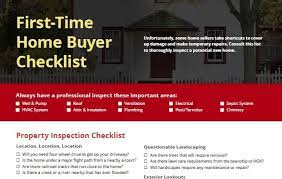In Maitland, pest issues are not uncommon. Its temperate climate and older housing stock can provide the perfect conditions for infestations. So, a pre-purchase pest inspection is not a luxury. It is a necessity. One that could save you from a financial and emotional catastrophe.
Whether you’re eyeing a cozy cottage in East Maitland or a modern build in Thornton, this checklist will guide you through every step of the pre-purchase pest inspection process in Maitland.
So, let’s delve deep into this often-overlooked but crucial task.
1. Understand the Purpose of a Pest Inspection
A pest inspection is not a general check-up. It is a laser-focused investigation. The inspector searches for signs of past or present pest activity.
- Termites.
- Borers.
- Wood decay fungi.
- Rodents and cockroaches.
This inspection does not fix the problem. It does not prevent future infestations either. But it identifies red flags. It gives you information.
2. Hire a Licensed Pest Inspector
Do not cut corners and hire someone just because they offer a cheaper quote. Look for professionals who hold valid pest control licenses. Check if they have experience in the Maitland area. Local knowledge is invaluable.
- Ask for proof of insurance.
- Request sample reports.
- Check online reviews.
- Talk to previous clients.
This inspector will be your eyes inside the property. Make sure those eyes are sharp and trained.
3. Inspect the Exterior Thoroughly
Start outside. Walk around the house slowly. Look for wood-to-ground contact. Garden beds hugging the walls can attract termites. Retaining walls made of timber are also high-risk.
Gutters should be clear. Drainage should flow away from the home. Moisture is the best friend of termites. Tree branches must not touch the roof. Overgrown vegetation can create pest highways.
Sheds, fences, and wooden decks deserve equal attention. They can be breeding grounds for insects. If neglected, the infestation may spread indoors.
4. Examine the Foundation and Walls
Crumbling mortar or bubbling paint might look harmless. But they often signal hidden damage. Termites can tunnel through brickwork and behind plaster. Look for mud tubes along walls. These are termite highways. You may not see the pests, but the tubes betray them.
Tap on the walls. Hollow sounds can indicate damage. Cracks can invite pests. Foundation integrity is not just a structural concern. It is a pest vulnerability.
5. Windows, Doors, and Screens
Check every frame. Wooden windows and door frames are termite magnets. Pay attention to flaking paint or spongy timber. These may be signs of internal infestations.
Screens must be tight and without holes. Small tears offer an easy entry point for flying insects. Once inside, they nest in dark corners and multiply. A single gap can lead to an invasion.
6. Interior Hotspots: Kitchens and Bathrooms
Moisture breeds pest life. Kitchens and bathrooms are ideal environments for cockroaches, ants, and silverfish. Inspect under the sink. So, check behind appliances. Look at the base of the shower.
Water damage often attracts subterranean termites.
- Leaky taps.
- Damp tiles.
- Unsealed grout.
These aren’t just plumbing concerns. They are pest lures. Repairing them after purchase can cost thousands.
7. Roof Voids and Attics
The roof space is often ignored. But this dark, quiet area is heaven for rats, mice, and possums. Inspectors should access the attic to look for droppings, nests, or gnawed wires.
Termites also love this space. They enter through fascia boards or cracked tiles. Once inside, they feast on roof trusses and support beams. If left unchecked, they compromise the entire structure.
8. Subfloor Inspections
If the property has a raised floor, the subfloor is an area that demands attention. Termites operate here undetected. Poor ventilation, pooled water, or rotting wood is a red flag.
Inspectors should enter this tight space with proper equipment. They’ll look for frass (termite droppings), mud shelter tubes, and high moisture levels.
9. Review the Pest Inspection Report Carefully
The final report of your pre-purchase pest inspection in Maitland is not just a checklist. It is a professional assessment. It includes evidence, photos, and recommendations. Read every word. Ask questions. Don’t understand a term? Ask for an explanation.
For example, many first-time buyers ask are click beetles harmful, and an inspector can clarify that while they may be alarming, they are generally not destructive like termites or borers.
Some reports may suggest further investigation. Others may advise immediate treatment. If damage is found, you may be able to negotiate a lower price or request the seller to fix the issue.
10. Understand the Limits of a Visual Inspection
Remember, pest inspections are visual. Inspectors cannot see inside walls. They cannot rip up flooring or cut holes. If you suspect deeper issues, request an invasive inspection or consider bringing in a structural engineer.
Also, know that the report is based on conditions at the time. Heavy rain, for instance, can obscure mud trails or dampness. Timing matters.
11. Use the Report to Inform Your Decision
After the inspection, you must make a call. Will you proceed? Will you negotiate? Or will you walk away?
A minor ant issue may not be a dealbreaker. But active termites in the roof cavity? That’s a different story. Let logic guide you. Not emotion.
This is your first home. Start strong. Start smart.
12. Consider Ongoing Pest Prevention
If you proceed with the purchase, think long-term. Ask the inspector about prevention. Should you install termite barriers? What about annual checks?
Preventative treatments can cost a few hundred dollars. Repairing termite damage can cost tens of thousands. The math speaks for itself.
Final Thoughts
First-home buyers often focus on location, price, and style. But pests do not care about your budget or dreams. They see timber—They see food. And they act.
In Maitland, pest inspections are not optional. They are your armour that reveals hidden truths that could save you years of regret. So, before you sign that contract, hire a pest inspector from Oz Pest.
With their help, you can understand the risks and walk into your new home with peace of mind and pest-free pride.

